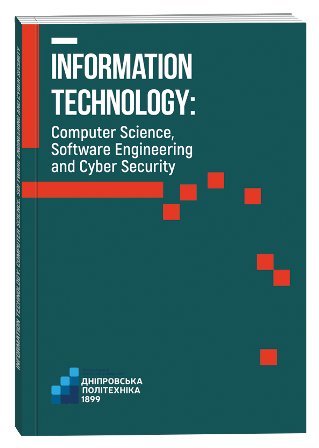ORGANIZATION OF RULES FOR VERIFICATION OF THE FUNCTIONAL PROFILE OF PROTECTION
DOI:
https://doi.org/10.32782/IT/2024-4-28Keywords:
functional protection profile, functional security services, automation of verification, grid systems, state expertise.Abstract
The article considers the process of formalizing the rules for verifying the functional security profile (FS), which is the basis for conducting state examinations of integrated information security systems (IISS). The scientific novelty of the work is the use of a functional security profile used to assess the completeness and consistency of the implementation of functional security services (FSS) in grid systems, as well as to identify threats to information security. Particular attention is paid to the formalization of the rules defined by the normative document ND TZI 2.5.004-99 «Criteria for assessing the security of information in computer systems against unauthorized access», which allow automating the process of checking the FSIs. The purpose of the article is to consider and improve three main tasks related to the FSI: determining the levels of implementation of the FSI, assessing their completeness and consistency, and identifying the description of functional services in the incoming documentation. The article describes a mathematical model of the FSF that takes into account the levels of FSF, a set of criteria (confidentiality, integrity, availability, etc.) and the conditions for the implementation of services. The formalization of rules allows to effectively check the compliance of the profile with regulatory requirements and automate this process. The methodology of the article is to formulate the conditions for the implementation of functional security services, such as «Trust Confidentiality», using matrices and equations. The analysis of such services demonstrates that their interdependence and exclusivity can be taken into account in automated systems for verifying FSS. Conclusions. The proposed approaches are the basis for the creation of decision support systems that increase the accuracy and speed of the state examination of IPSS. The results of the study are aimed at improving the methodologies for ensuring information security in grid systems.
References
Зегжда Д. П., Калінін М. О. Методика аналізу захищеності інформаційних систем. Проблеми інформаційної безпеки. Комп’ютерні системи, 2002. (3), 7–12.
Лукацький А. Упевненість фахівців з безпеки у своїх силах похитнулась. 2016. URL: http://gblogs.cisco.com/ru/asr2016-2/.
Давиденко А. Н., Шабан М. Р. Розробка методики проведення експертиз комплексних систем захисту інформації. Збірник наукових праць Інституту проблем моделювання в енергетиці імені Г. Є. Пухова НАН України, 2014. (73), 114–121.
Новіков О. М., Тимошенко А. О. (2002). Логіко-функціональні моделі безпеки інформації в інформаційно-обчислювальних системах з відкритою архітектурою. Наукові вісті НТУУ «КПІ», (2), 40–46.
Гільгурт Я., Дурняк Б. В., Коростиль Ю. М. Протидія атакам алгоритмічної складності на системи виявлення вторгнень. Моделювання та інформаційні технології, 2014. (71), 3–12.
Яловець А. Л. Представлення та обробка знань з точки зору математичного моделювання. Київ: Наукова думка. 2011.







